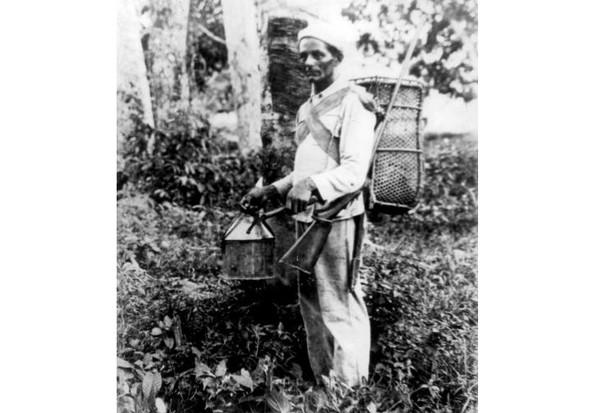A World War Two shortage of rubber ensured that thousands of Brazilian workmen were forced to undertake dangerous rubber extraction from the Brazilian Amazon forest.
Around 55,000 Brazilians were made to take part in the rubber extraction programme that would provide countries around the world with valuable rubber for their aircraft, vessels and land vehicles, as well as weapons.
Now after 70 years, the Brazilian government is making a compensation payment to each of those rubber workers who are still alive today, which totals almost 12,000. The payment is around US$7,800.
Most of the men are now elderly and are grateful to have the additional funds to support them, but many say that the compensation is nothing to what they had to endure in the forests.
The Rubber Soldiers Union has been set up to represent the war time rubber veterans and the organisation says that the men were treated like slaves and then abandoned when the war ended.
Brazil’s government says that through the payments they are trying to balance out the discrepancy. Officials admit it has taken too long to provide the men with compensation, but are committed to rewarding the men.
The US was manufacturing and producing its own rubber prior to 1941 from a deal with the Malay Peninsula where it sourced its raw rubber from. But when the Japanese invaded and occupied the area, the US lost almost all of its rubber supply.
By the following year the US signed an economic and military cooperation agreement whereby Brazil would provide rubber to the US at a fixed price for five years. In return the US would provide millions in loans, military gear and development funding.
The scheme provided much needed employment for the locals and promised to clothe them, provide food and accommodation and support them. As thousands signed up, little did they know that the work was dangerous and many never returned home.
The men were given a knife and shown how to extract the milky rubber sap out of the trees and then were literally left to their own devices, even hunting and gathering for their food. No regular wages were paid, since the authorities said they would be paid at the end of the year when they actually received just clothing, shoes and salt.
The wives who had followed their husbands to the rubber areas along with their children, lived in squalid conditions. There was no medical care and no education or school, and childbirth increased dramatically. Disease was rife and many died of typhus.
The men would work from dawn to dusk and there were many allegations of abuse from those in authority.
Some say that around half the men who left for the rubber forests died before the war ended.
However with all that effort, Brazil’s rubber production only increased by around 5,000 tonnes in the years of its agreement with the US. The US therefore turned to alternatives and was able to capitalise on the development of synthetic rubber during the war, the Aljazeera America reports.
Therefore the rubber workers were left forgotten and overlooked until 2011 when Brazil’s President ratified the workers as national heroes and awarded the workers the one off payment.
The Rubber Soldiers Union is fighting for more than the one of payment and demanding pensions and benefits be added to the reward.
